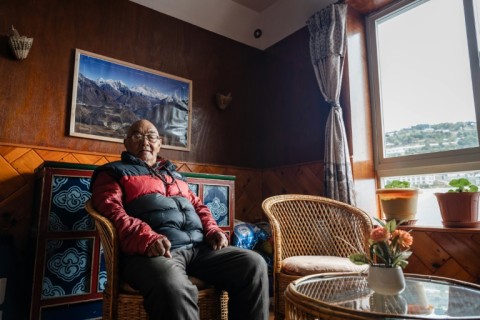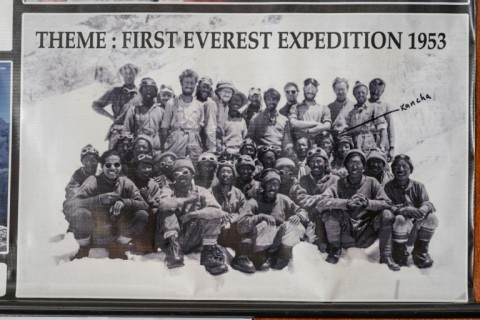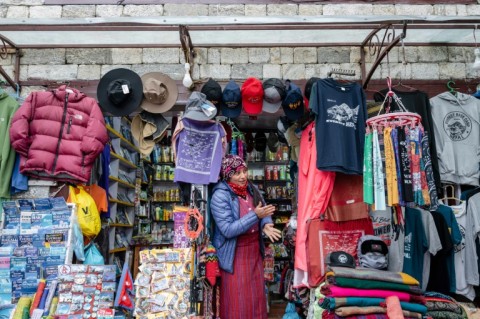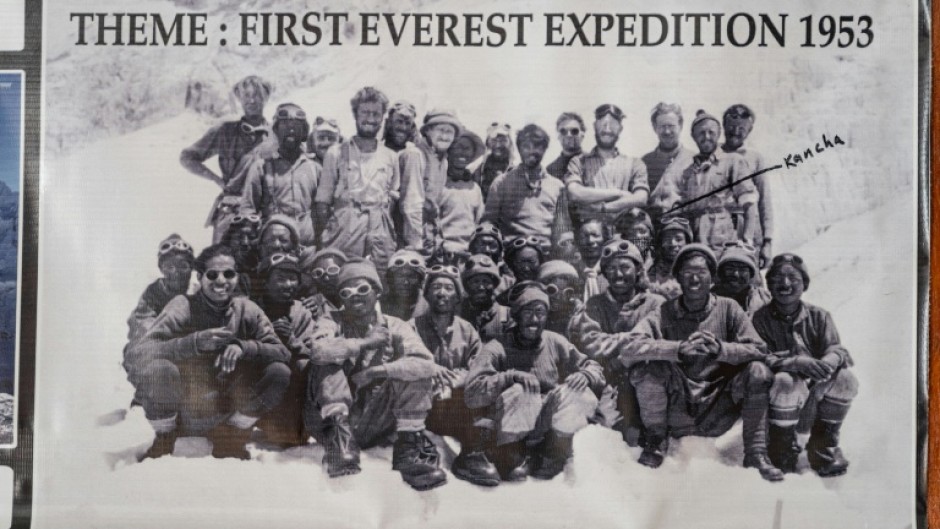
DARJEELING - Nonagenarian Kanchha Sherpa is the last surviving member of the 1953 expedition that saw Edmund Hillary and Tenzing Norgay Sherpa become the first humans to summit the world's highest mountain.
But his journey to prominence began in the opposite direction: at 19, he ran away from his home in Namche Bazaar -- now the biggest tourist hub on the route to the Everest base camp -- to Darjeeling in India, looking for Tenzing in hopes of finding work.
The future co-summiteer had already established himself in the hilly Indian region, which was the starting point for expeditions at the time as Nepal had only recently opened to foreigners.
At first, the teenager did chores at his mentor's house.
Months later he found himself back in his home region as a member of the British expedition, for just a few Nepali rupees (now a few US cents) a day.
The team first gathered in Kathmandu, then walked for days to the base camp, carrying tents, food and other equipment.
While today's climbers follow a well-trodden route set by experienced Nepali guides, Sherpa remembers the team navigating the pristine mountain on their own.

In oversized clothes brought by the British, the Nepalis would sing songs as they ferried supplies to ever-higher camps.
Although he had no mountaineering training, Sherpa climbed beyond 8,000 metres on Everest.
Now 90, he was tired and not available to speak to AFP ahead of Monday's anniversary, but his grandson quoted him as saying: "The happiest part was when Tenzing and Hillary summited."
- 'Opened our eyes' -
Seven decades later, hundreds follow the pioneering duo's footsteps to the summit of Everest every year, fuelling a multi-million dollar mountaineering industry.
Thousands more arrive in Nepal to get a glimpse of the breathtaking Himalayas.
Over the decades, the term "Sherpa" became synonymous with high-altitude guiding as they became the backbone of mountaineering, bearing huge risks to carry equipment and food, fix ropes and repair ladders.
Sherpa worked in the mountains for two decades more, until his wife asked him to stop his dangerous journeys.
But in a 2019 interview with local channel YOHO TV he said: "Tenzing and Hillary opened our eyes and made development possible here. Life was very hard before. There were no means to earn a living."

He has witnessed the transformation of the Everest region first-hand.
"After the Everest summit, tourism grew here exponentially. Due to that our lifestyle has changed and so has our income," he said at the weekend, as quoted by his grandson Tenzing Chogyal Sherpa.
The most important change has been the education of Sherpa children, the former climber said.
"They now have the option to study and as a result of that they can be whatever they want -- like a doctor or an engineer or even a scientist like my grandson," he said.
"I would never have imagined such a thing being possible during my days. That is a benefit of the growing tourism and mountaineering."
He now leads a foundation in his name, to support families who cannot afford to send their children to school.
But he added: "I fear that the Sherpa youths are getting too influenced by Western culture and might slowly forget the Sherpa culture and language."

